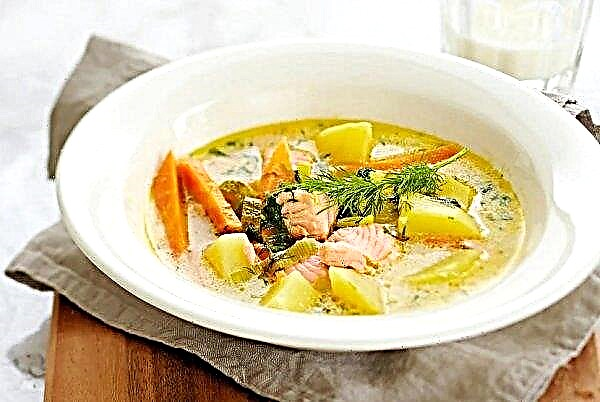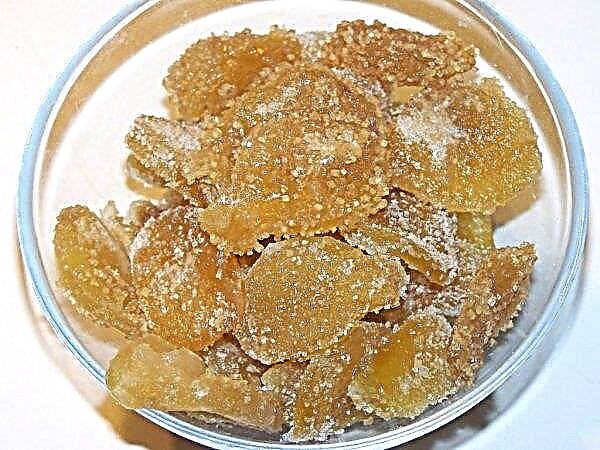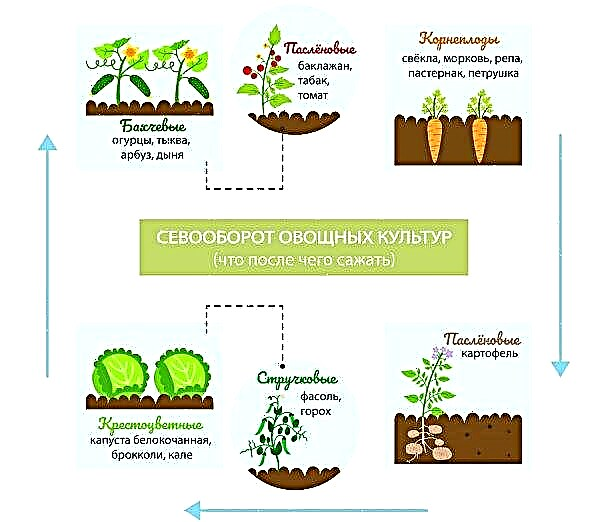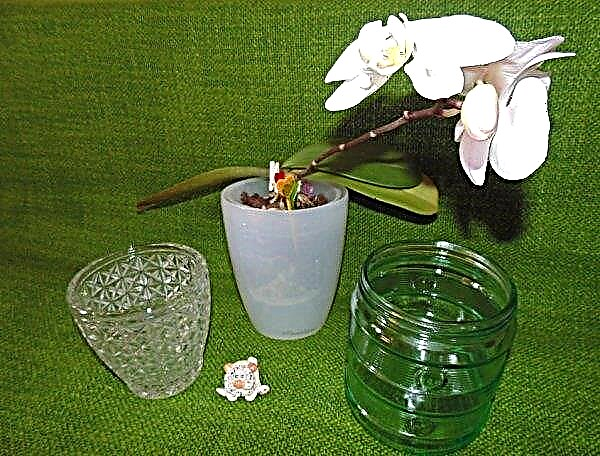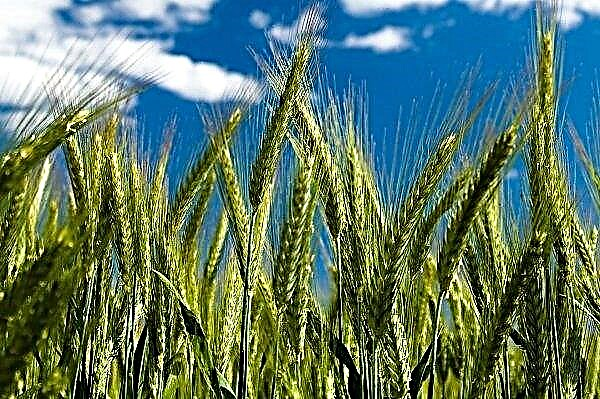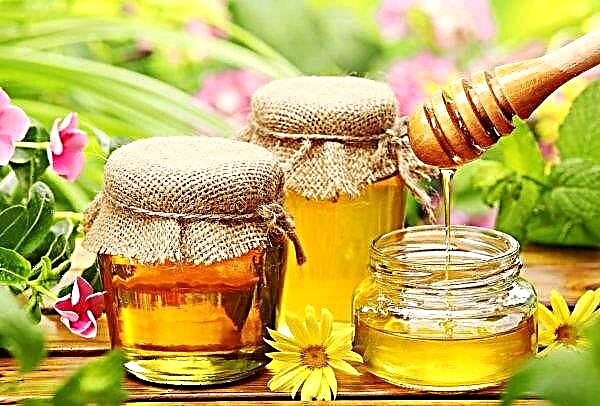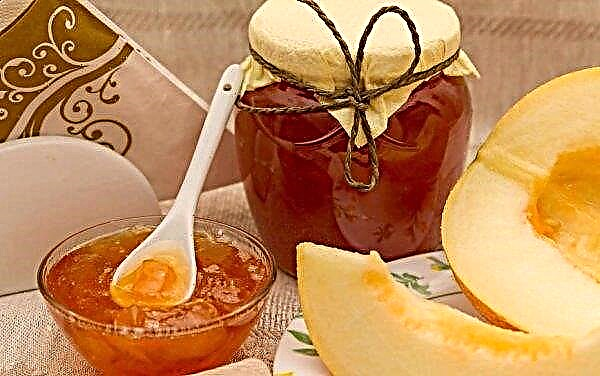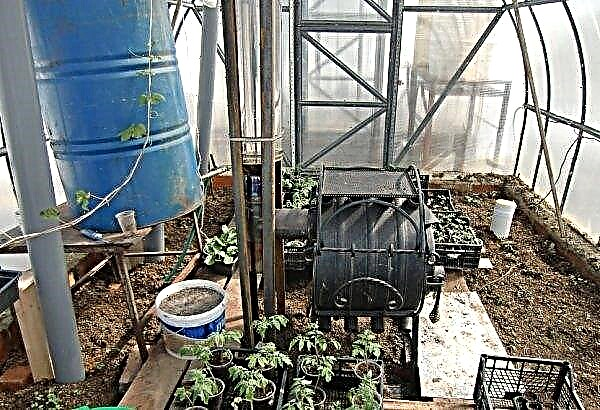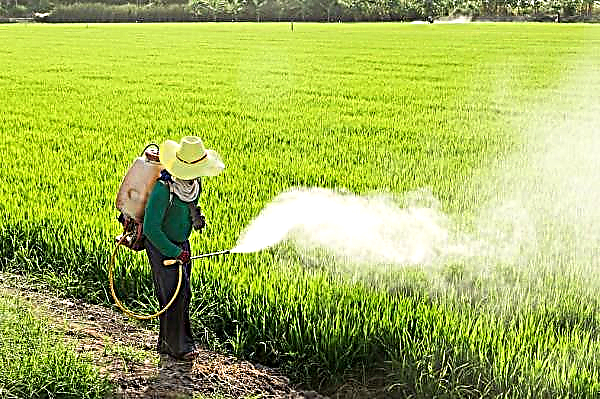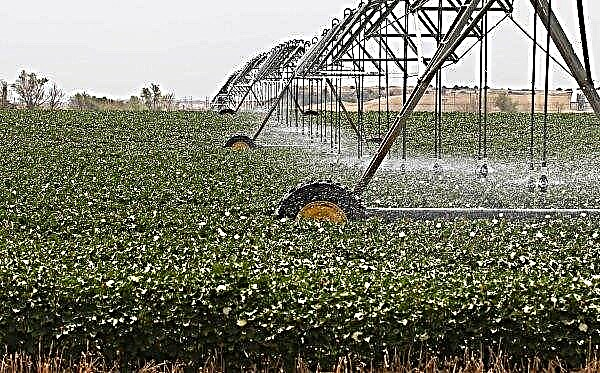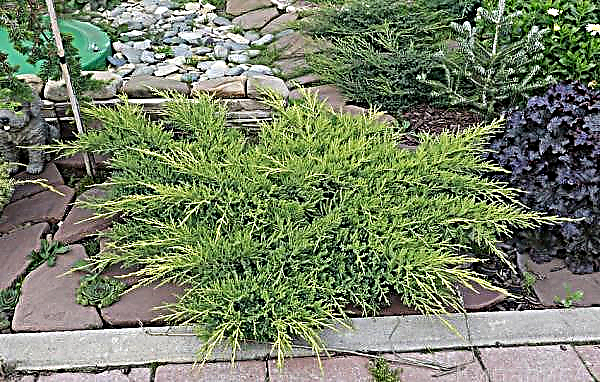Most people who first saw huge bulbs, which often consist of several parts-children, take a vegetable for a hybrid of onions and garlic. In fact, this is the bow-anzur, which will be discussed in the article.
Plant description
Onion-ansur, onion of Suvorov, giant, Dutch, stalked, highest - all of these names belong to one perennial plant - wild onion, which has a huge number of varieties. The natural environment for culture growth is the territory of Altai and the western region of Central Asia - gorges, mountain slopes, salt marshes.
However, it is cultivated in almost all corners of the world. And this is not surprising, because the spicy culture is "not capricious" neither to the soil composition, nor to climatic conditions. Since there are many species and subspecies, as well as hybrids obtained through breeding, their external parameters also vary.
But this bow has common characteristics:
- At the beginning of the growing process, the green part is similar in appearance to tulips, and as it grows, it becomes more and more like garlic, only of a much larger size.
- The stems are tall, from 1 to 1.5 m; in some subspecies, they can grow up to 2 m in height.
- The leaf plate is wide (up to 10 cm), in shape resembles lily of the valley leaves, only of larger sizes. The leaves are the earliest “vegetable” greens, but after a short time (14–20 days) they become coarse, stiff and fibrous, turn yellow and become unsuitable for food.
- A distinctive feature of anzura are the decorative appearance of spherical inflorescences of small bright lilac or white flowers that occur in the upper part of the onion arrow.
- The underground part of plants is formed in the form of huge bulbs (they can reach 15 cm in diameter), which appear 2-3 years after planting on a ridge.
- Taste qualities combine both onion and garlic shades, but at a more mature age, the taste of garlic prevails more and more. In this regard, the culture is used as a spicy preservation.
Important! In raw form, anzur bulbs can not be used, since they are poisonous! Vegetables should be pre-processed (soaking, pickling).
Varieties of anzur onions
Mountain onions are divided into two large groups, which are formed based on the degree of ribbing of the stem. The first group includes onion species having pronounced ribbing on the stem.
They include:
- Giant onion. The oval bulb grows up to 6 cm in diameter, and the leaves and stems grow up to 2 m. The flowering period begins in early summer and lasts until the end of June, delighting amateur gardeners with attractive inflorescences of purple or snow-white flowers, which are used for decorative purposes in landscape design, as well as cut.
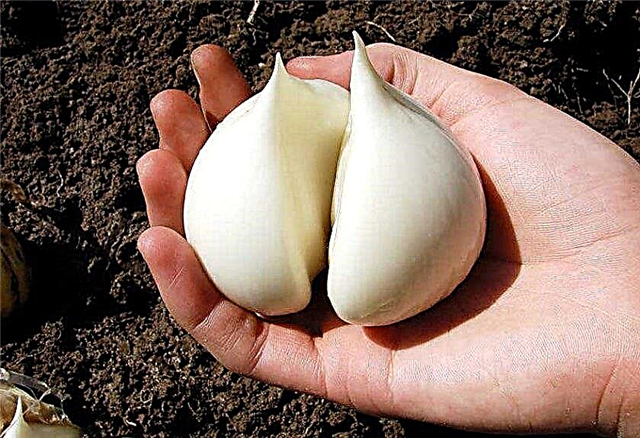
- Dutch. This kind of anzur is slightly smaller than the previous one - it grows about 1 m in height, however, the bulb is impressive in size (about 5 cm) and covered with paper-like scales. The lower part of the stem has a pronounced ribbing. The plant blooms in the last spring month and for several weeks has been pleasing with attractive spherical inflorescences of all shades of pink.
- Ezdian. Somewhat less Dutch (the diameter of the underground part of the plant is about 35 mm, and the width of the leaf plate is about 4 cm). Flowering occurs in June. Flowers - pale purple with characteristic white stamens.
- Macklin's Bow (Tall). It differs in pronounced ribs on the stems. It has the same dimensions as the previous look, but the flowers are a soft lilac hue that delight the entire first summer month.

- Rosy. Flattened in the lower and upper planes, the bulb of this species can be classified as miniature (30 mm in diameter). A distinctive feature of the onion is inflorescences with pale pink flowers, which have pinkish stamens that are clearly visible.
- Bow of Suvorov. It is very similar to the Rosy, but the “Suvorov” onion is distinctly round, and the leaf plates have a rough edge. Inflorescences can be both symmetrically round, and with asymmetry.

The second group includes plants that have a smooth stem surface.
Important! The nuance that should be taken into account in the case of cultivation of anzura as a homestead culture is intolerance to excessive soil moisture.
They include:
- Aflatun Bow. The green part reaches 180 cm in height, and the diameter of the onion part (oval) is 60 mm. The flowering period lasts 4 weeks and occurs in early summer, delighting with umbrellas of bright purple color.

- the tallest. In appearance it is similar to Aflatunsky, but differs in accuracy and miniature.

- Rosenbach's Bow. The main distinguishing feature of this subspecies is the presence of only 4 leaf blades (some sources call the number "6") and a silver shade of saturated pink inflorescences. On sale may have the name "Salute, Maria!"
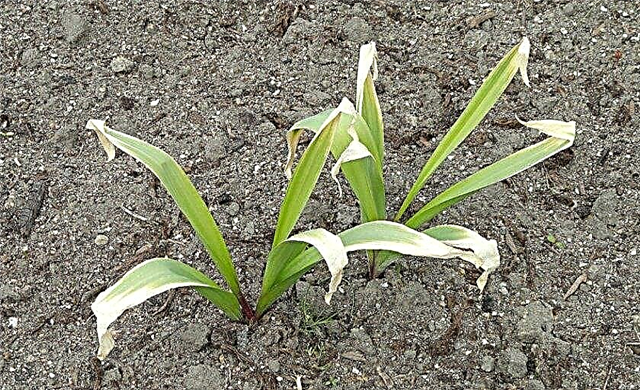
- Zarevshansky. It is very similar to Rosenbach, the only difference is that the sheet width reaches 0.1 m, and the plates are covered with a bluish coating.
- Stalked. Anzur, characterized by early flowering (at the very beginning of the month of May) and snow-white flowers (less often - a red hue). Plant height ranges from 60 cm to 150 cm.
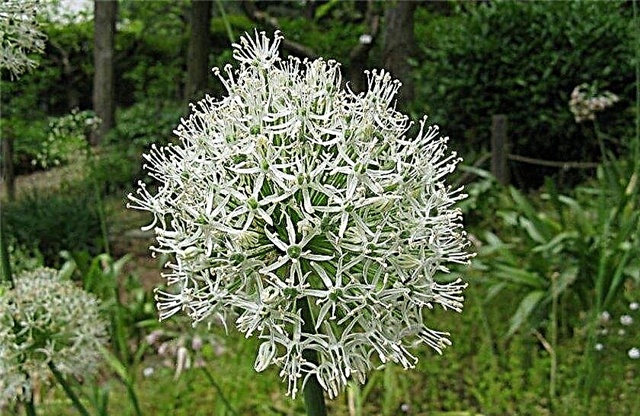
In addition to two groups of typical species, there are hybrids and varieties that are also actively used as ornamental plants.
The most “running” of them:
- Lucy Ball;
- Glory of Pamir;
- Goliath;
- Globus
- Gladiator
- Album.

Useful properties of the plant
Anzur onions are cultivated as a vegetable crop for the preparation of salads, okroshka and soups using young green shoots. Due to the rapid coarsening, the sheets are not stored for a long time, but are perfectly suitable as raw materials for freezing, which, after thawing, retain taste and vitamin properties.
Bulbs should be subjected to a lengthy pre-treatment process (soaked for about 4 weeks, often water me) to remove the sulfur smell and toxic compounds present in the vegetable. Used as raw material for pickling, baking. Boiled with honey.
Did you know? The sugar content in onions is greater than in pears and apples, so when frying, when the essential substances are destroyed, the vegetable acquires a sweet taste.
Eat such foods should be in small portions and infrequently. The plant has a number of useful properties, which are due to the presence of a large amount of ascorbic acid, vitamins E and B, as well as salts of mineral origin.
Namely:
- bactericidal;
- vitamin
- medicinal (improves digestion functions);
- phytoncidal;
- spicy.
Outdoor landing
Let us dwell on the main points associated with the landing of anzura in open ground.
Optimal timing
When planting Dutch onions using seeds as a planting material, the recommended sowing date is the end of October, after the ripened seeds are collected from the "parent" plant. Of course, the timing should be correlated according to the weather characteristics of a particular region.
Important! If a spring landing is planned, experts recommend pre-stratification. To do this, the mixture of onion seeds and wet sand is kept for 6 months in a refrigerator, after which they are completely ready for sowing.
Site selection and soil preparation
Mountain onions are not very demanding on the landing site, so they choose both a sufficiently lit area and a semi-shaded area. Culture also “does not make any special requirements for soils,” as the main thing, as mentioned above in the article, is to avoid overmoistening of the soil.
Experts advise:
- to minimize the risk of fungal lesions, the consistency of the soil should be loose, and the composition should be sandy;
- peat and well-overripe humus are used as top dressing (in small quantities);
- predecessor crops - cabbage, cucumbers, potatoes, on the site of which you can plant onions;
- give preference to high, loose beds (5-10 cm), with well-loosened, without weed residues of plants, soil surface.
Sowing seeds
Shallow grooves (1.5 cm) are made on the surface of the prepared ridge and seeds are placed in them. Sprinkle with a layer of peat or compost (2 cm). Shoots appear in March-April. Scheme for sowing onions.
Scheme for sowing onions.
Onion Care
Watering stalked onions should be dosed, avoiding overmoistening of the soil layer, even for a short time. After each irrigation, loosening is carried out and weeds are eliminated along the way.
Fertilize a vegetable plant, adhering to the following schedule:
- nitrogen fertilizing (urea) - when seedlings appear;
- spraying “Ferovit” - 14 days after the first fertilizer. It will enhance the process of photosynthesis in the leaves;
- wood ash + potassium sulfate - make the mixture three times during the entire period of plant vegetation. Combine with loosening the soil.
Did you know? The world leader in onion consumption per capita is Libya. According to statistics, every citizen of the country eats 33 kg of vegetable per year, while in France this figure is only 5.6 kg.
How to propagate anzur onion?
In addition to the seed method, vegetative propagation is practiced (by children, slices, bulbs). This method is considered more simple. For this, the planting material specified above is placed in the prepared soil, deepening by 13-15 cm and observing a distance of a quarter meter. Bulbs for reproduction. Planting is important to carry out before the onset of frost, so that the material has time to root well.
Bulbs for reproduction. Planting is important to carry out before the onset of frost, so that the material has time to root well.
Possible growing problems
Anzuri have increased immunity to diseases and pests, so do not be afraid of the occurrence of infectious, bacterial and other diseases. As mentioned above, the greatest danger of culture is putrefactive processes arising from a violation of water exchange. At the first manifestations, the affected plants are dug up, and for healthy, the irrigation regime is changed.
Harvesting and storage
If giant onions are grown for food, they are removed from the ground immediately after flowering before the leaves dry. If cultivation occurs in order to obtain decorative inflorescences, the underground parts of the plant can be left in the garden. Store the vegetable after drying in paper bags, in a dry and dark place. The long and laborious process of preparing onion raw materials for subsequent use in food, as well as a specific taste, make anzura a rather specific vegetable in cooking. However, due to the decorative effect, the giant onion attracts the attention of gardeners and gardeners more and more.
The long and laborious process of preparing onion raw materials for subsequent use in food, as well as a specific taste, make anzura a rather specific vegetable in cooking. However, due to the decorative effect, the giant onion attracts the attention of gardeners and gardeners more and more.








